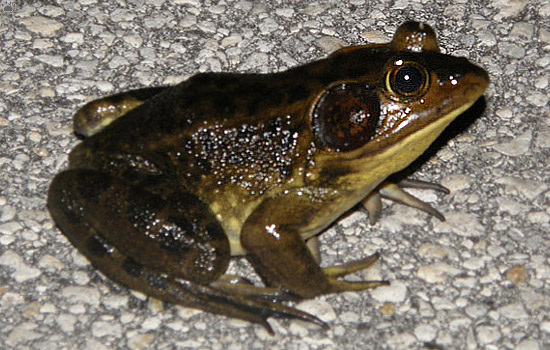
Bullfrog (R. catesbiana), River Rise State Preserve. |
Florida, part 23: Amphibians (continued)
In addition to various treefrogs, Florida is inhabited by lots of other amphibians. An unusually large percentage of species here is fully or predominantly aquatic.
 |
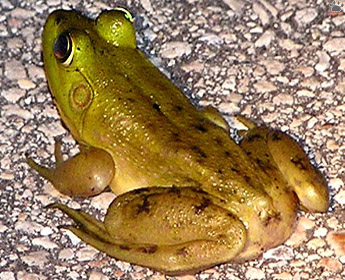 |
| Pig frogs (Rana grylio), BCNP. |
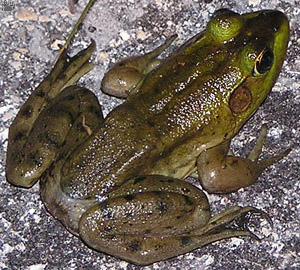
Bullfrog, Ocala National Forest. |
Millions of Rana frogs swim in Florida's wetlands. The largest is the bullfrog, but it doesn't occur in the south, where the very similar pig frog is very common. |
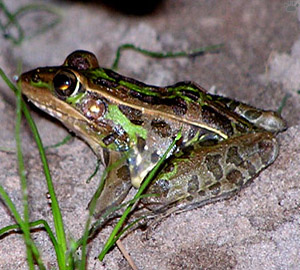
Southern leopard frog (R. utricularia), ABS. |
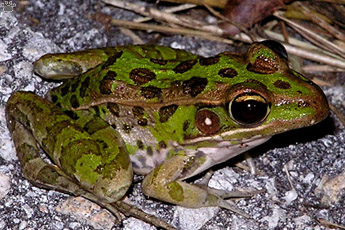 |
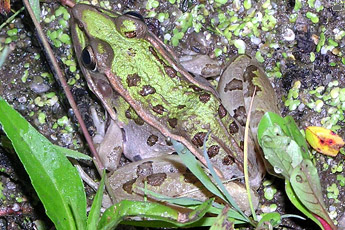 |
| Southern leopard frogs, ABS. |
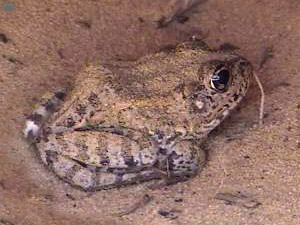
Florida gopher frog (R. capito aesopus), ABS. |
The most unusual one is gopher frog: it prefers dry sandy areas, and spends the day in gopher tortoise burrows. |
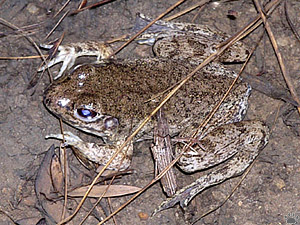
River frog (R. heckscheri), ABS. |
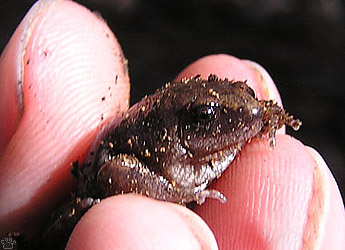
Eastern narrowmouth toad (Gastrophryne carolinensis), SFHSP. |
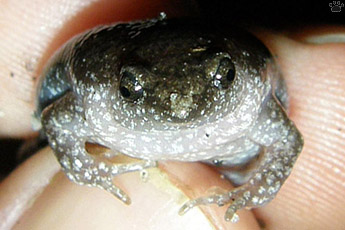
Eastern narrowmouth toad, Mike Roess Gold Head Branch State Park. |

Oak toad (Bufo quercinus), Everglades National Park. |
Toads are usually nocturnal, but for some reason the smallest Florida species - the tiny oak toad - is active during the day in its hot, dry woodland habitat. |
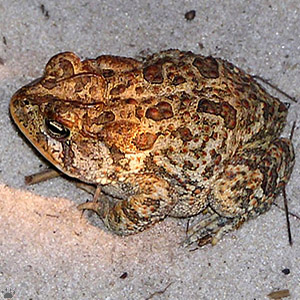
Southern toad (B. terrestris), ABS. |
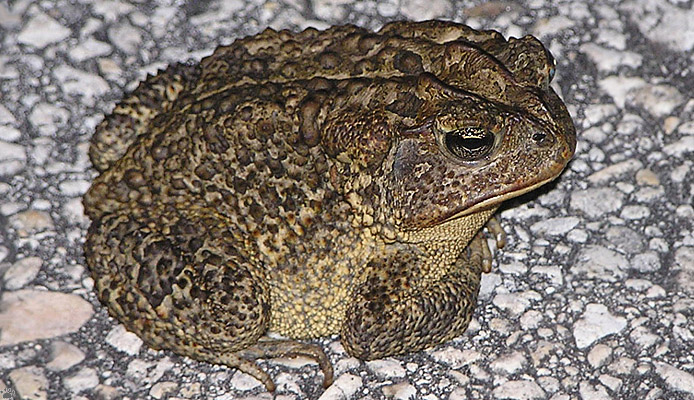
Southern toad, ABS. |
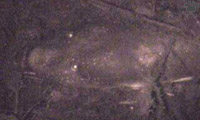
Two-toed amphiuma (Amphiuma means), HHSP. |
Terrestrial salamanders are relatively uncommon in Florida. There's a lot of aquatic ones - sirens and amphiumas - but they are difficult to see. Amphiumas are giant, ancient, eel-like nocturnal creatures that slowly crawl on the bottom of the swamps in search of prey, and hide in the mud during the day. |

Two-toed amphiuma, HHSP. |

Oak toad, ENP. |
Part 24. Fishes
Back to Part 22
Home
|